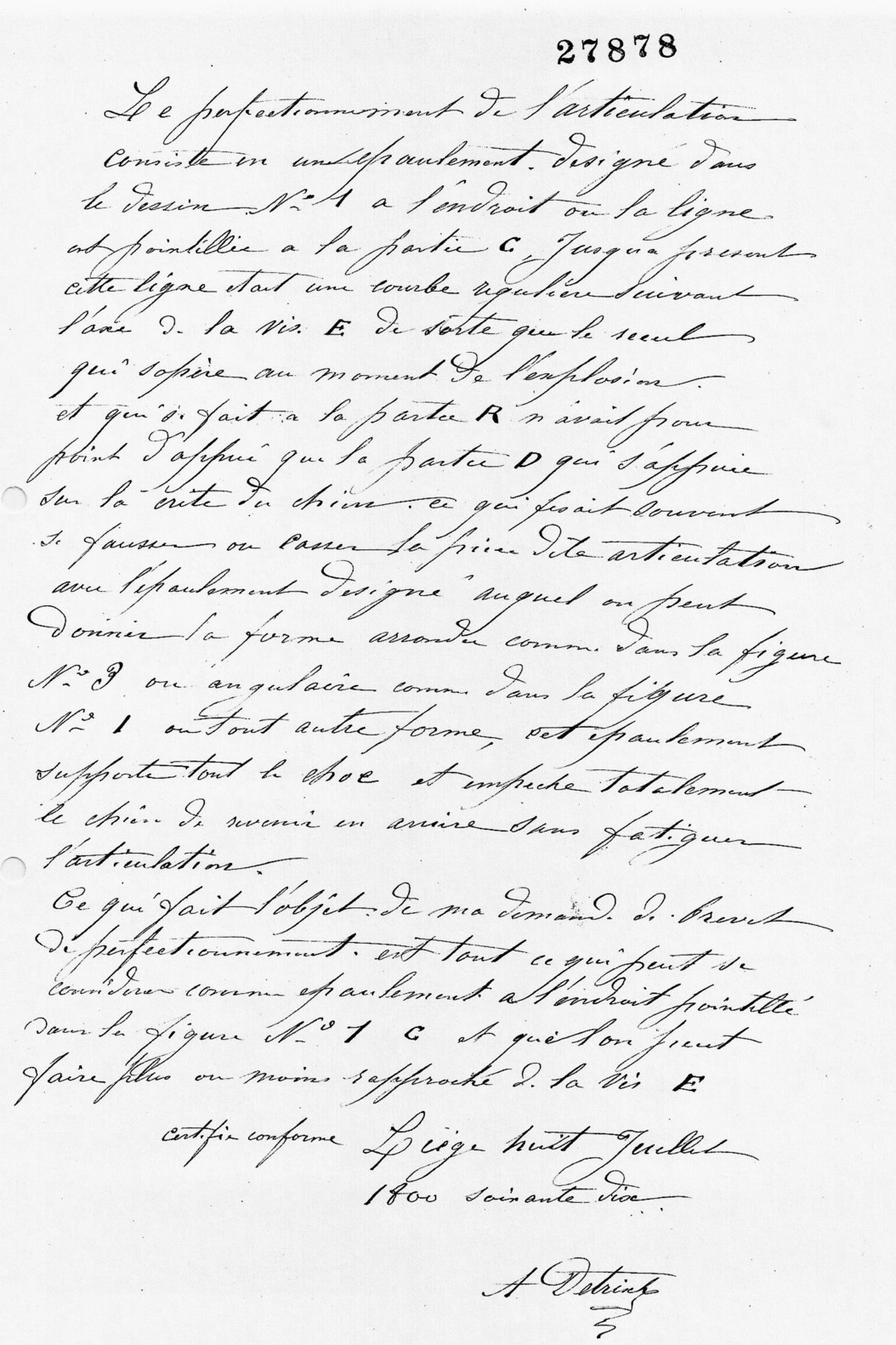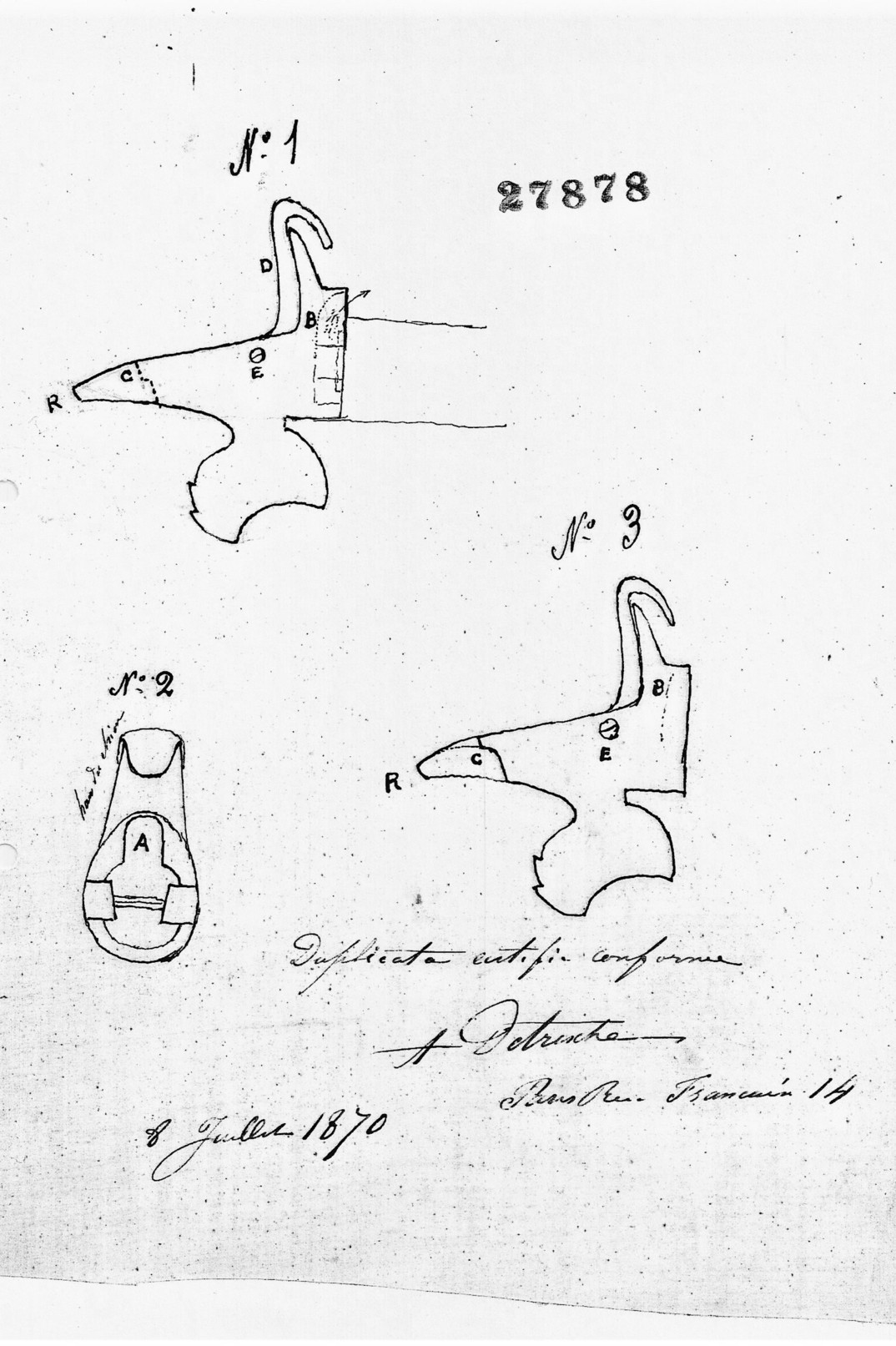Some of the most beautiful work of this craftsman, and many others, are in this book “Liège Gunmakers through their Work. 1800 - 1950”.
For more detail see: LIEGE GUNMAKERS
Mariette Guillaume
Here is a
beautiful pistol (Flobert cartridges), marked G. Mariette. The hamer is equipped
with a specific mechanism that could be a kind of security.
The
markings
Except a number 1765 (the manufacturing number? ) and
two letters that appear to be an "n" and a "v" (unidentified), only the mention
G. Mariette
is found. It is curious that this beautifully crafted gun was not presented to
the profhouse.
Guillaume Mariette de Cheratte has deposited
twenty-two patents in Belgium between 1840 and 1888. The “Who is who of the
armoury” does not give the dates of
Guillaume
Mariette’s enrolment in proofhouse of
Liège. Either we don’t know them or he hasn’t been listed.
One of
Guillaume Mariette’s
patents, 4272 of April 23, 1857, concerns modifications made to the Flobert
pistols, so there is a great temptation to see this pistol as an example of the
application of this patent.
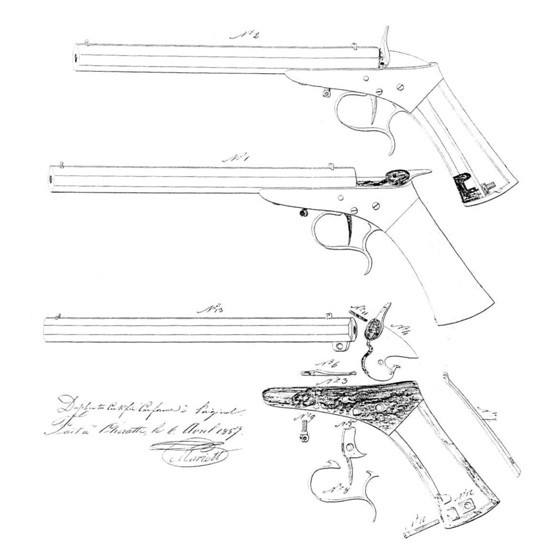
But at
the examination of the drawings attached to the patent, you must be disappointed
since you see no trace of the piece added to the hammer’s crest. Indeed,
according to its happy owner, the piece in question blocks the hammer: it is not
possible to arm the hammer without pressing at the same time on the piece which
is otherwise striated.
In addition, and above all, we must keep in mind the
marking, namely
G. Mariette. If
the gun in question were indeed patented by
G. Mariette,
he would have added “patented” to his name.
A certain
Ulysse Bourlez
did file patent 16 088 in 1864 showing such an outgrowth, but it concerns
pinfire weapons.
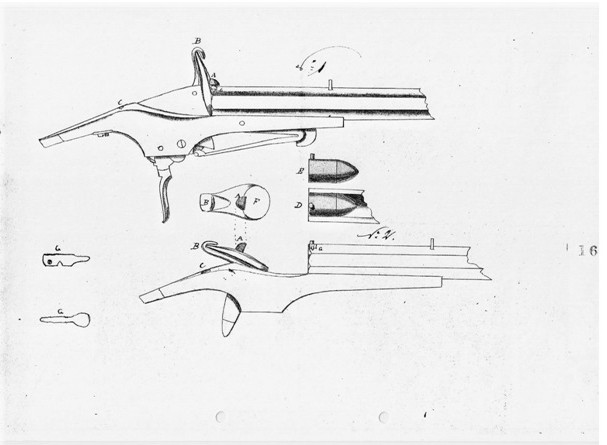
Finally, in July 1870,
A. Detrixhe
filed patent 27 878 for modifications to salon weapons.
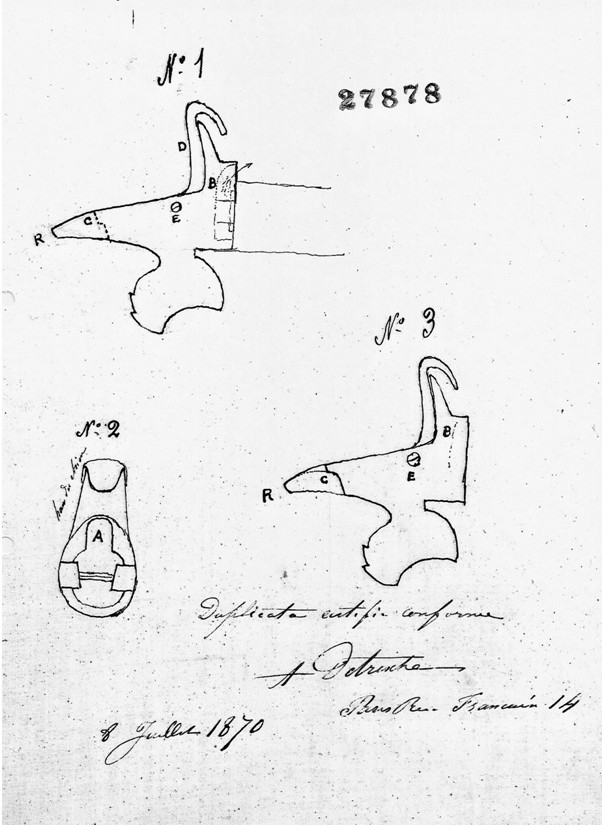
And now we’re getting closer to the weapon we’re
studying. But here we are, we can’t find anyone trace of mention of
A. Detrixhe
on the gun!
Nor is it impossible that the gun in question was
manufactured after A. Detrixhe’s
patent came into the public domain.
This
beautiful gun has not yet revealed all its mysteries!
Thanks to
the whole team for their research!
GP
Brevet 27878 de A. Detrixhe
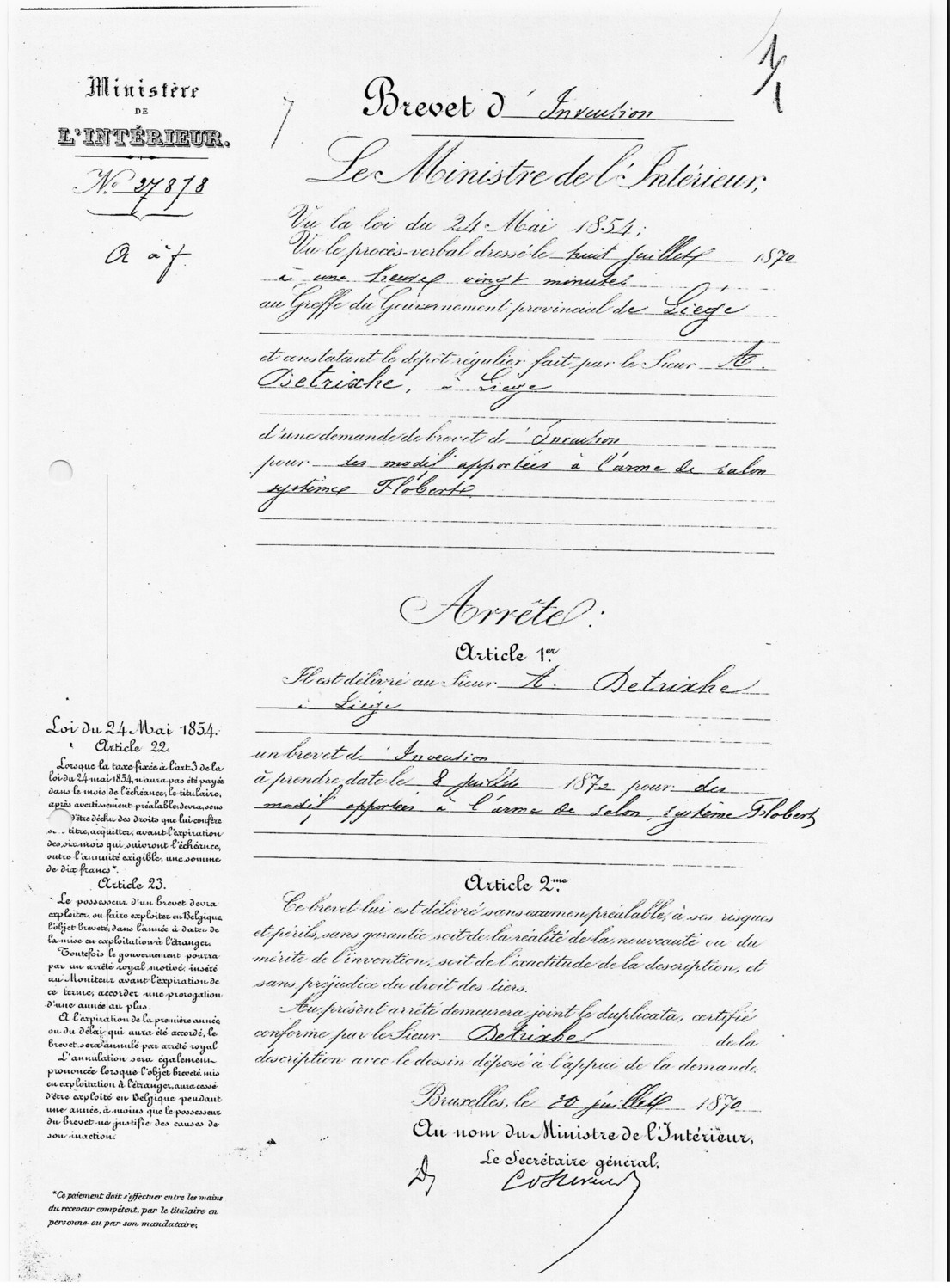
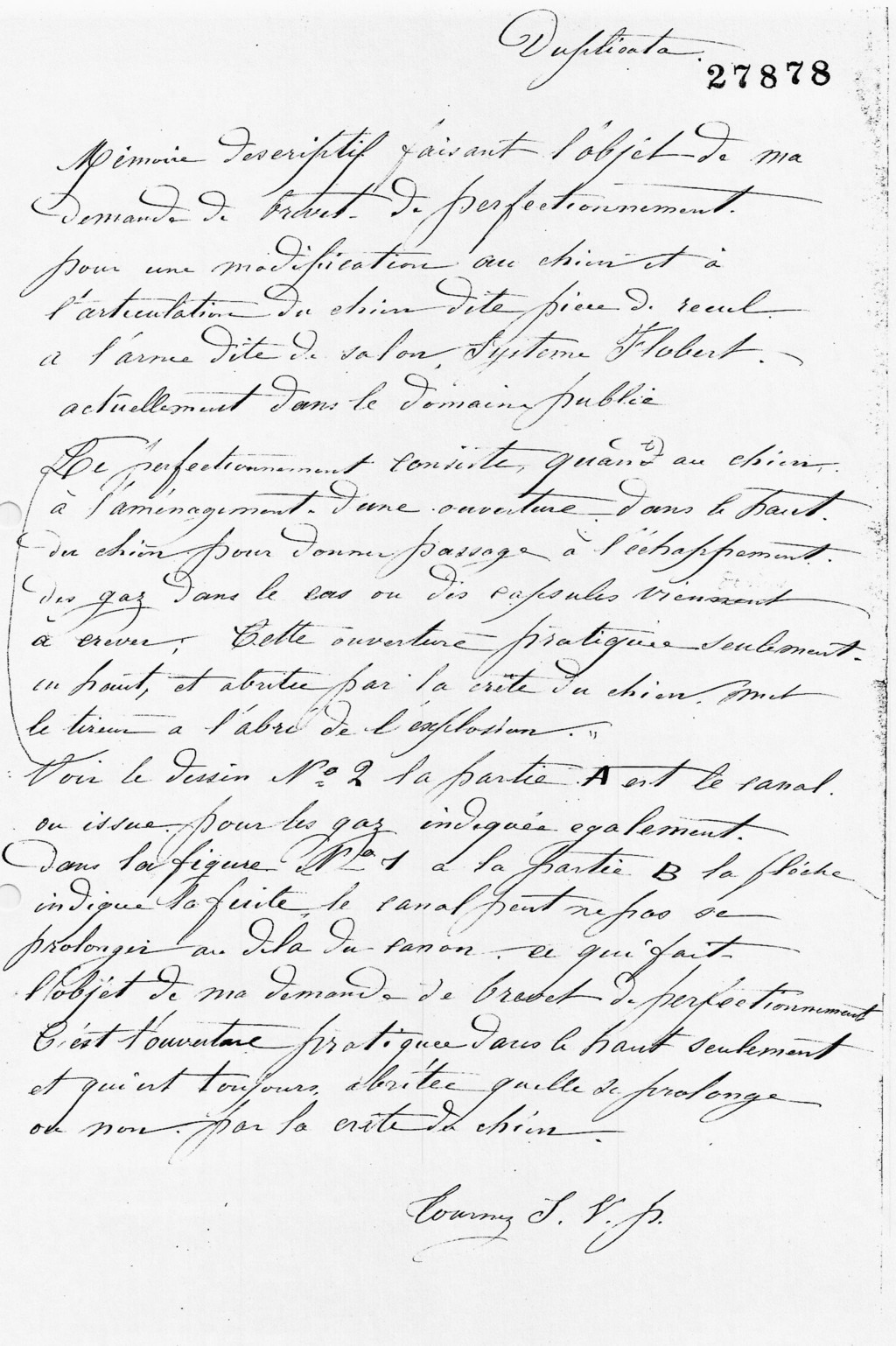
Retranscription de la page 3
Le perfectionnement de l'articulation consiste en un épaulement désigné dans le dessin N°1
à l'endroit où la ligne est pointillée à la partie C. Jusqu'à présent cette ligne était une courbe régulière
suivant l'axe de la vis E de sorte que le recul qui s'opère au moment de l'explosion et qui se fait
à la partie R n'avait pour point d'appui que la partie D qui s'appuie sur la crête du chien ce qui faisait
souvent se fausser ou casser la pièce de l'articulation avec l'épaulement désigné auquel on peut donner la
forme arrondie comme dans la figure N°1 ou tout autre forme, cet épaulement supporte
tout le choc et empêche totalement le chien de revenir en arrière sans fatiguer l'articulation.
